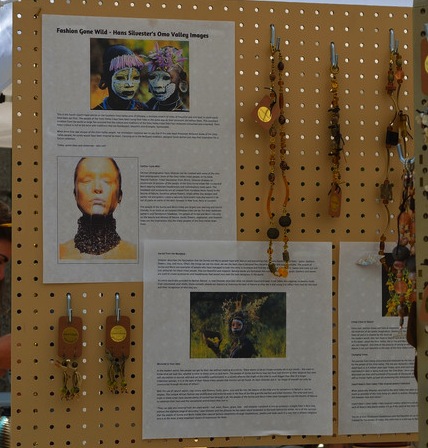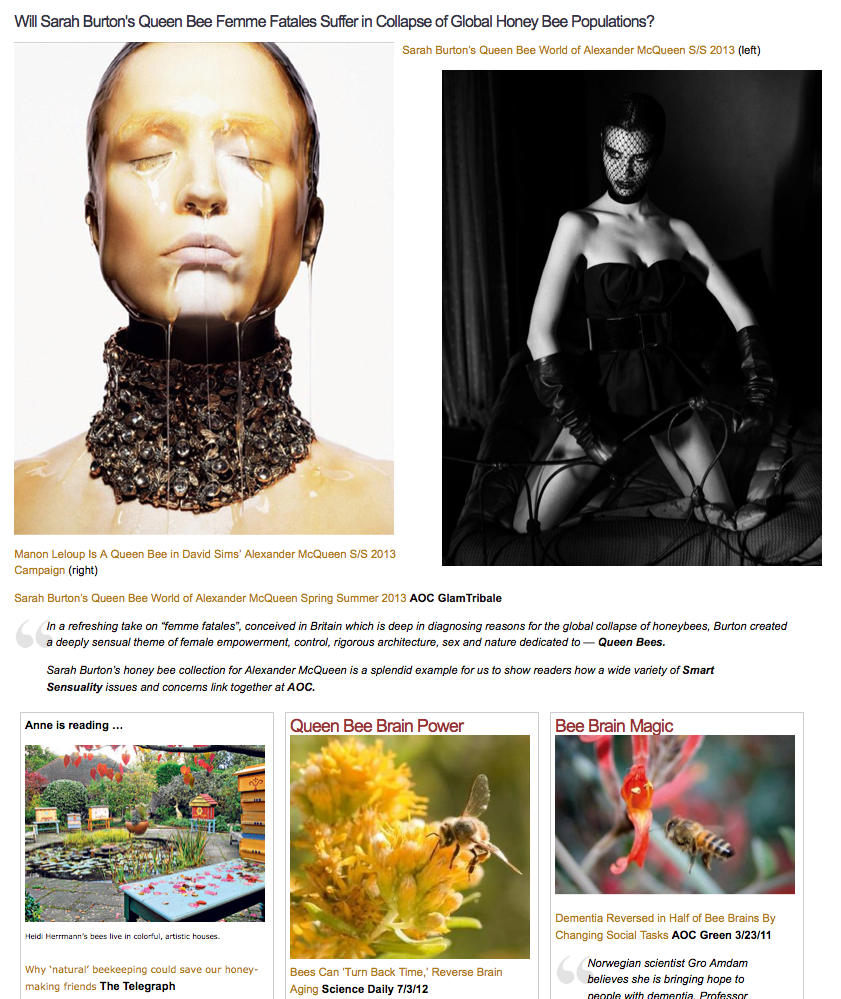'More Than Honey' Bee Documentary Focuses On Sex Lives of Queen Bee Where More Is Better
/via Scientific American
A male honey bee is essentially a winged penis doomed to die immediately after losing his virginity. On summer afternoons, male bees—known as drones—emerge from many different hives and gather in a small swarm. No one is sure exactly how drones pick their “congregation areas” or why they are often in exactly the same place year after year, but the answer likely has something to do with fragrant chemical messages known as pheromones. The drones wait for a virgin queen from a nearby colony to make an appearance and compete for the chance to mate with her mid-flight, crashing into one another as they race after her alluring perfume. If a drone is successful, the act of copulation rips his penis and entrails from his abdomen, so he falls to the ground and dies. The queen mates with as many as 20 drones in a single flight and stores millions of their sperm in an internal pouch called a spermatheca—sufficient supplies for a lifetime of egg-laying.
Imagining what a mating flight might look like is all well and good; watching it happen as though you were a drone flying alongside the queen is so much better. The fascinating and gorgeous new documentary “More Than Honey” offers just such a bee’s-eye view.
In America, current estimates suggest that a total of 1.5 million out of a total of 2.4 million behives have disappeared across 27 states. In Germany one-fourth of bee colonies are gone. This global phenomenon is called “colony collapse”, and it is s source of grave concern. Without bees, there is no pollinization of our food supply. 80% of plant species require bees to be pollinated.
It appears doubtful that a single pestiside or parasite is responsible for the colony collapse of the world’s honeybees. Rather, a combination of modern-world forces seems likely to killing our honey bees.
Fifty years ago, Albert Einstein said:
“If bees were to disappear from the globe, mankind would only have four years left to live.”
French Roast News
Anne is reading …
Washington State University is at work to develop the first sperm bank for honeybees. Entomologist Steve Sheppard and his team are using liquid nitrogen to preserve semen extracted from males, with the goal of preventing subspecies from becoming extinct.
Honeybees are serious business in America. Washington’s $1 billion apple crop, for instance, needs 250,000 colonies of bees each year to pollinate the orchards. California almond growers need 1 million colonies per year to pollinate their crop.
Sheppard is also working to create smarter, stronger bees with a focus on three subspecies for import into the US. These three prized subspecies come from Italy, the eastern Alps and the Georgia’s mountains.
The Italian bees, for instance, are prized because they reproduce quickly and provide maximum pollination for early-blooming crops like almonds, Sheppard said. By contrast, beekeepers in colder climates want bees that delay reproducing, so a late cold snap does not kill an entire brood, he said. That’s where the bees from the Alps and Georgia are valuable.
Queen Bees With Many Mates
A new study highlights the importance of genetic diversity in honey bee colonies as key to their survival. More mates is better for the queen bee.
Previously, scientists knew that genetic diversity affected survival under controlled conditions. Dr. David Tarpy, an associate professor of entomology at North Carolina State University and lead author of a paper describing the study, took genetic samples from 80 commercial colonies of eastern US honey bees.
Studying the genetic samples allowed researchers to determine the number of males a colony’s queen has mated with.
In those colonies where the queen had mated at least seven times, the survival rates were 2.86 times more likely to survive the 10-month working season. Among those colonies, 48 percent survived to the end of the season — still an alarmingly low level. By contrast, only 17 percent of the less genetically diverse colonies survived.
In 2012 scientists at Indiana University also found that greater diversity in worker bees leads to colonies with “fewer pathogens and more abundant helpful bacteria like probiotic species.” Researchers Irene L.G.Newton and Heather Mattila’s work confirms that the genetic diversity created in a colony where a queen mates with many male bees improves colony health and productivity.
Omo Valley Honey Bees
Anne of Carversville and Glam Tribale jewelry and gifts are studying the Omo Valley peoples living in southern Ethiopia. Regarded as the cradle of human civilization, the Omo Valley tribes are under assault — much as the global honey bee population is threatened. Two Omo Valley tribes— the Mursi and Surma — who are associated with extensive body decoration and covering their bodies with plants and vegetation inspire us daily.
Anne incorporated a visual of Sarah Burton’s spring Alexander McQueen collection honoring honey bees and the Queen Bee in particular — into our new outdoor Saturday market at Philadelphia PHAIR. Photographer Eric Tourneret — The Bee Photographer — has lensed ‘The honey tribes of the Omo Valley, Ethiopia’.

Will Sarah Burton’s Queen Bee Femme Fatales Suffer in Collapse of Global Honey Bee Populations? (Follow link to live links on all these articles in photo.)
Queen of the Sun: Whar Are the Bees Telling Us
